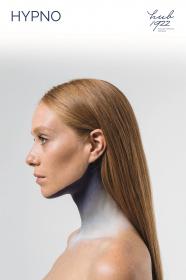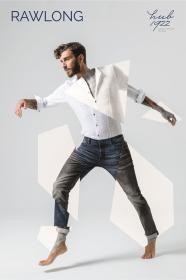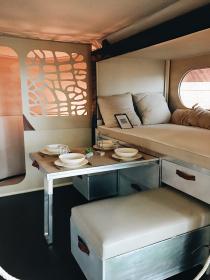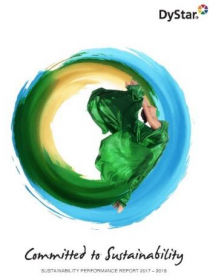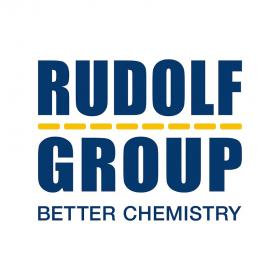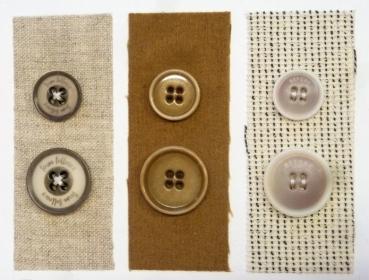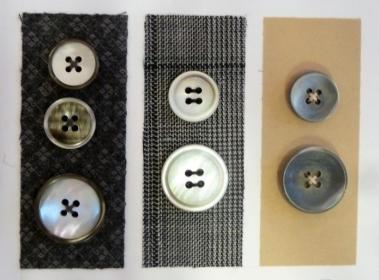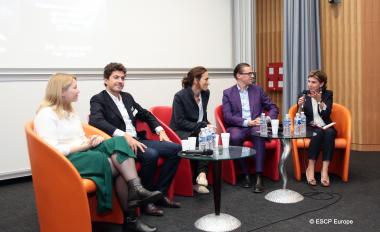RUDOLF GROUP: Thinking Science and Design
- HUB 1922, the fashion division of the RUDOLF GROUP, takes the stage at the Kingpins Show in Amsterdam and presents new technologies that make it possible to move away from environmentally questionable industrial practices.
- HUB 1922 also announces the opening of the new company building in an ancient textile factory near Milan.
Amsterdam/Geretsried/Milan. It was only six months ago that the RUDOLF GROUP, with its fashion Division named HUB 1922, began its journey through the fascinating world of garment finishing. Since then, the team has made significant progress and has moved from being a newcomer to the business to a solid and reliable reality. “HUB 1922 introduces the Rudolf Group to design thinking,” says Alberto De Conti, Head of Fashion Division at Rudolf Group. “And when you break perceived restrictions and paradigms within a strongly science-driven organization, only sky is the limit.”
For an entire semester, the organisation remained focused on one, single goal without getting distracted from it: to become the partner of choice for environmentally conscious advancements in garment processing that are rooted in real experience and science.
Emphasis was put on listening attentively to the market and on engineering solutions proactively, without being prompted.
When it comes to Denim, two separate yet correlated calls for action were heard:
1. the need for a serious departure from established industrial practices that are environmentally questionable
2. the opportunity to change the current rules and stir toward enhanced product quality.
Departure from the environmentally questionable
- HypNO: The next generation of bleach
Many attempts to technical alternatives to local and total denim bleaching have been launched in the market, over the past five years, by a number of competing players. Originality and innovation are at the base of HypNO technical uniqueness that can be injected into traditional denim processing, but that can also be used to create whole new processes and aesthetics.
Birth child of relentless dedication to science, HypNO is the latest alternative to the traditional denim bleaching agents currently under the spotlight because of their alleged safety issues. HypNO is the next generation of bleach.
- HypNO is based on the application of a whole new family of RUCORIT compounds, which are halogene-free and heavy metal-free
- HypNO can replace both potassium permanganate and sodium hypochlorite with one more eco-friendly solution
- HypNO is free from unpleasant smells; it is production friendly and suitable for both spray and bath applications
- HypNO does not require neutralisation with agents such as sodium metabisulphite or peroxides, hence reducing the need for chemicals significantly
- HypNO is GOTS approved. Bluesign and ZDHC Chemical Gateway certifications are intended
- HypNO further helps in the elimination of pumice stones
- HypNO is highly efficient and has been engineered to be cost competitive compared to other existing bleaching solutions
Toward enhanced product quality
- SoSoft, RawLong, DuraBlue
Durability over time still builds a brands’ reputation for quality. The notion of “durability” has changed over the years and has moved from sturdy workwear to the product's ability to retain its characteristics and structural properties.
“It goes against the whole denim philosophy, but, jeans are increasingly bought for what they look like at the time of purchase and are expected to evolve as little as possible. It is what it is; you can’t argue with consumers” says De Conti.
SoSoft, RawLong, DuraBlue, the three new technical concepts launched at Kingpins Amsterdam by the RUDOLF GROUP all sit under the umbrella wings of enhanced quality and specifically address long-lasting softness, preservation of original look and depth of blue.
- SoSoft
All appreciate the softness and suppleness of used/worn denim and the comfort benefit it delivers. It is a generic denim truth, and it is even stronger when it can extend over time. SoSsoft is about softeners carefully engineered for an enduring emotion, one that lives along favourite clothes.
Tried and tested to over 15 home washes, these marvels of chemical engineering allow consumers to toss domestic fabric softeners to the benefit of environmental sustainability.
- RawLong
Denim lovers want raw jeans to fade with time, soften and transform into what feels like an extension of their body. More often, people just want to prolong the look they chose. In both cases, home washing is a headache.
Years of testing have identified RawLong innovative, highly durable and natural solution that keep wearers fresh and at ease in their jeans allowing for long-wearing without washing. Moreover, less home washing means much less impact on the environment.
- DuraBlue
The role of designers is to come up with the bluest of blue jeans in a spectrum of fantastic new blue finishes and supporting textures. The role of DuraBlue is to ensure a continuously updated collection of technical solutions that keep that rich, deep, dark blueness of jeans for much longer while limiting the quality issues that come with denim rubbing. In other words, light underwear, snowy shoes, and white sofas no longer live in fear.
The launch of HUB 1922
- Busto Arsizio, Italy.
On a discreet street of Busto Arsizio, a village at the North of Milan is a red-brick building which in the 1800’s was the house of a textile mill. This 150-year-old structure is where the RUDOLF GROUP, the 100-year-old leader of textile, functional, responsible chemistry, is about to open its Fashion Division. Or, better, it’s HUB 1922.
HUB 1922 is committed to research and develop innovation within garment processing for the privately held mother company. HUB 1922, whose doors are expected to open during fourth quarter of 2018, will foster collaborative efforts with international fashion brands and retailers, will provide product innovation ideas at the crossroad of fashion and utilitarian functionality and will introduce elements of unorthodox diversity rooted in deep scientific knowledge, true environmental responsibility, technical innovation and creativity. “At a time when science plays such a powerful role in the life of society, it is incumbent on fashion to be dealing with scientific research. HUB 1922 facilitates that reunion” concludes De Conti.


